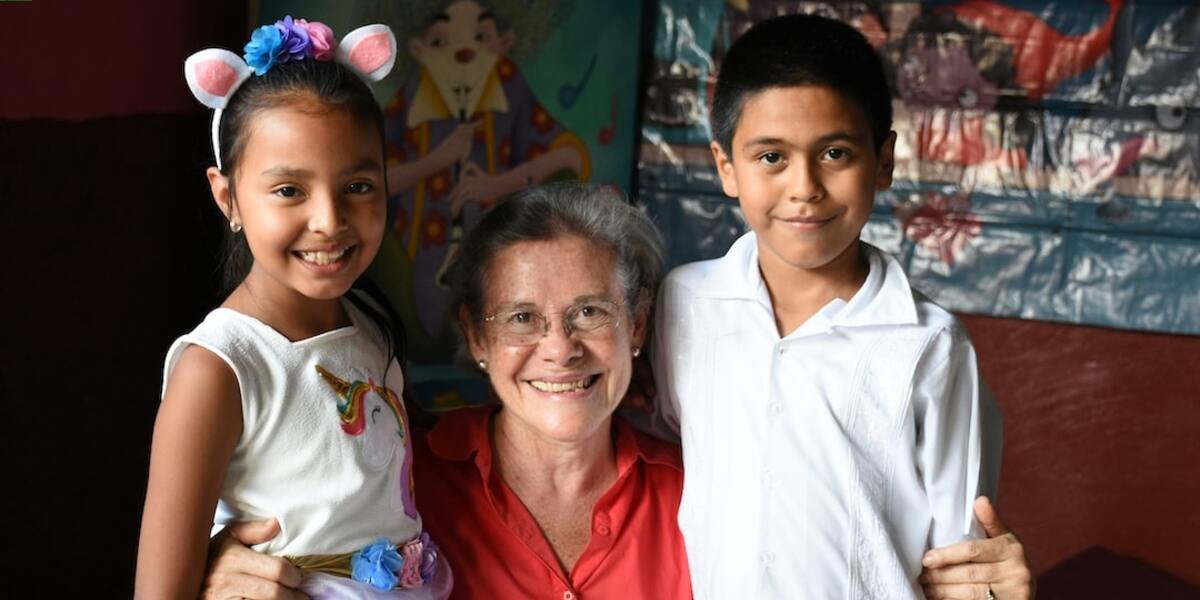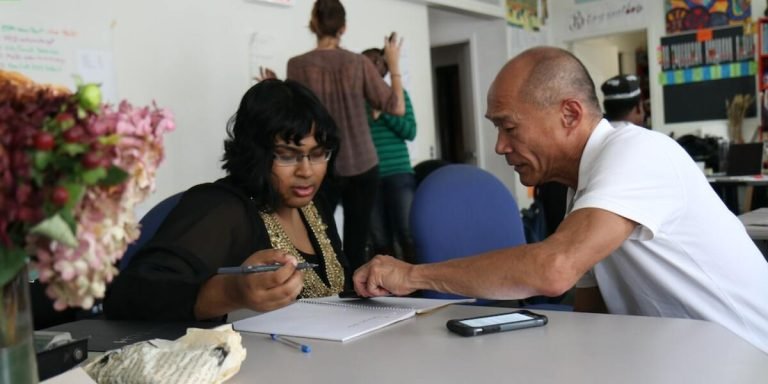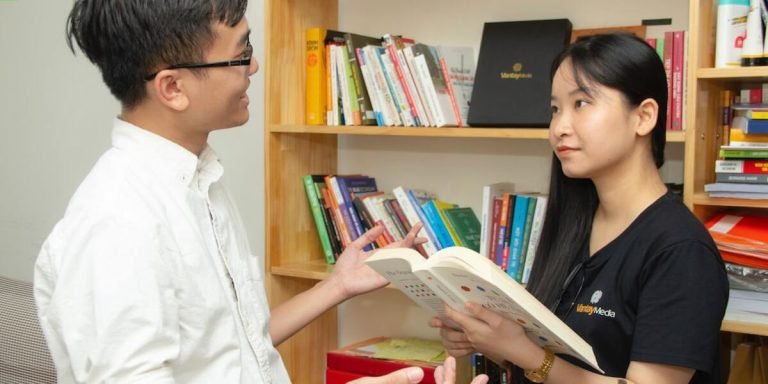Familyschool: A Closer Look at the Intersection of Home and Education
The concept of “familyschool” is rapidly gaining momentum in the modern educational discourse. This hybrid approach combines both traditional and homeschooling methods, highlighting an intersection where home turns into a dynamic learning environment for children.
Navigating this new trend could be overwhelming for parents and educators alike – which underscores the urgent need to fully understand its intricacies. Through comprehensive discussions around parent-educator support mechanisms, we hope to shed light on how familyschool can provide a robust platform that nurtures well-rounded learners adapting seamlessly within changing dynamics of education landscape.
Did you know?
Did you know that children who experience education both at home and school perform better academically? According to the National Home Education Research Institute, homeschoolers typically score 15-30 percentile points above public-school students on standardized academic achievement tests.
Strengthening Family-School Partnerships for Holistic Education
Strengthening family-school partnerships is more than just a cooperation; it’s the foundation of holistic education in the 21st century. It offers an integrative approach molding all aspects of a child’s development, like social-emotional growth and academic prowess. In this digital age where “familyschool” becomes crucial, parents and educators are required to join hands using technology as their communication bridge.
With modern educational technologies at our fingertips, nurturing these family-school partnerships has become seamless yet effective. Apps and websites that allow real-time chat between teachers and parents keep both parties updated on children’s progress almost instantly. Parents can now be part of every assignment or celebration no matter how far away they might be from the school physically.
However, building strong parent-educator support isn’t solely about implementing sophisticated apps but leveraging simple tools for maximum impact too. Tools such as virtual notice boards give room for transparency by sharing everything – right from daily homework assignments to upcoming events with parents regularly . This not only ensures continuous parental involvement but also makes them feel valued in contributing towards their child’s educational journey.
Lastly, remember that fostering strong collaborative relationships between families and schools revolves around trust-based engagement rather created through consistent interaction over time which truly results in holistic education; one wherein we empower young minds’ full potential collectively.
Cultivating Effective Communication Strategies Between Parents and Teachers
In the quest for holistic education, effective communication strategies between parents and teachers take center stage. Today’s digital landscape has transformed not only how students learn but also how families interact with schools—a concept referred to as “familyschool” partnerships in 2023.
Parents’ involvement is a critical component of student success and having robust familyschool communications places children on the path towards achievement. Teachers can spearhead this initiative by embracing technology-integrated systems that facilitate seamless interactions between them and their wards’ caregivers.
One such strategy is using tools like school management platforms or parent-teacher interaction apps which are designed specifically for ease of use, real-time updates, and two-way communications. These applications allow parents to monitor their child’s progress regularly without solely relying on scheduled face-to-face meetings.
Text messages concerning daily homework assignments or upcoming tests can be sent directly from these software programs enabling minimal disruption to both parties’ schedules while keeping everyone informed about important academic matters instantly – fostering an environment where parental guidance becomes significantly easier due to readily available data at hand.
Implementing Collaborative Decision-Making Processes in School Policies
In the quest for engaging a holistic educational approach, implementing collaborative decision-making processes in school policies has become paramount. It’s through this method that familyschool partnerships are strengthened and can greatly contribute to advancing technology integration in education.
It is crucial for parents and educators alike to understand family-school collaboration isn’t about relinquishing control but rather sharing it. Collaboration encourages participation from all stakeholders, yielding more rounded decisions beneficial for everyone involved. More importantly, these discussions often lead to better insights into how technological resources could effectively assist learning curves.
The first step toward achieving successful collaboration involves creating an environment where every voice matters – teachers’, administrators’, students’ or parents’. Open-door policies that welcome suggestions on current issues breed trust among participants which results in efficient problem-solving methods being enacted faster than ever before while incorporating modern-day technologies seamlessly.
Parents play an essential role as they bring unique perspectives based on their child’s encounters with new tech tools utilized at home or within online learning spaces over the year 2023. They have firsthand experience of what works best when integrating necessary gadgets like tablets or computers into daily household chores hence providing valuable feedback during policy formulation stages.
On the other end, educators lend expert opinions drawing from professional training experiences plus direct interactions with different student dynamics within classroom settings equipped using state-of-the-art instructional methodologies aimed at improving performance levels across various academic subjects throughout this digitally advanced era.
Enhancing Learning Outcomes Through Parental Involvement
Parental involvement has always been a crucial element in child education, but the familia school trend takes it up another notch. Now more than ever, technology is aiding parents to effectively participate and contribute towards their children’s educational journey. The seamless integration of digital tools can enhance learning outcomes by creating an interactive environment that bridges home-based and traditional classroom learning.
The advent of virtual classrooms and online resources has made familial schooling not just possible but also increasingly practical. Parents now have access to vast arrays of instructional materials on various subjects ranging from mathematics to social sciences boosting parent-child engagement at home through mutually rewarding learn-and-teach sessions.
In conclusion, leveraging technology empowers parental participation in childhood education ensuring personalized experiences fostering robust understanding – An invaluable investment towards future-ready generations!
The Role of Parent Volunteer Programs in Academic Success
In 2023, one of the critical factors in enhancing learning outcomes can be attributed to active parental involvement. With the digitization of education and integration of technology into classrooms, parents now have multiple avenues to support their children’s academic journey. A key element within this framework is familyschool or parent volunteer programs.
Parent volunteer programs play a vital role in academic success by fostering a stronger connection between families and schools. They signal that learning does not limit itself inside school boundaries but extends beyond it – right at home or wherever internet connectivity allows access.
Parents who take part actively contribute positively towards building conducive environments for students, motivating them through familiar faces from family directly involved in their educational development process. This turns out to be particularly essential as we navigate new dynamics introduced by online lessons where physical interpersonal interactions are reduced dramatically.
Integrating Home-Based Educational Support with Classroom Teaching
The integration of home-based educational support with classroom teaching is a focal point for enhancing learning outcomes. When parents or guardians become active participants in the education process, it fortifies the bond between ‘familyschool’ and paves a smoother path to academic success.
In 2023, technology permeates every aspect of our lives and holds immense potential for bridging education gaps. We can use it as an interface to link family involvement directly with school curriculums. Here’s how to achieve this symbiosis:
1. **Digital Platforms:** With familiar apps on their smartphones and computers, parents are better equipped to comprehend what’s being covered at schools while educators get insights into learners’ environment back home.
2. **Virtual Meetups:** Regular video conferences work well when geography poses challenges in traditional parent-teacher meetups making communication easier than ever before.
3. **Interactive Learning Tools:** Engaging digital tools such as online quizzes or games make learning more enjoyable thereby promoting positive reinforcement both at school and within homes.
With real-time updates about students’ progress via messaging apps or email notifications; parents stay informed thus enabling them to offer timely help if needed.
5.**Collaborative Assignments**: Technology facilitates co-learning opportunities through shared assignments which could involve both educator-guided projects managed by students along with parental oversight.
Navigating Challenges in the Family-School Dynamic
The Family-School dynamic, often referred to as ‘familyschool,’ is a critical aspect of childhood education. In the current age of technology integration in education, this relationship between parents and educators has become more crucial than ever before. The shift from traditional teaching methods to digital platforms brings about myriad challenges that we need to address with urgency.
One primary concern lies in the gap between technological know-how among educators and parents alike. It’s no secret there exists a divide where some individuals are well-versed while others grapple with basic operations on educational apps or websites used for schooling purposes at home due to lack of experience or training necessity.
Addressing Barriers to Engagement for Working or Non-Traditional Families
Working or non-traditional families often face unique barriers to engagement in the familyschool dynamic, especially with the accelerated adoption of technology integration in education caused by recent global events. However, these obstacles should not be seen as roadblocks but rather opportunities for growth and innovation both at home and within the school environment.
Many of today’s families face a common barrier: a lack of time due to work commitments or unconventional schedules, making it hard to engage with their children’s academic progress meaningfully. Schools and educators can better accommodate and support these families by taking the following steps:
1) **Embrace Flexible Communication Channels**: In 2023, there’s no shortage of technological options available for maintaining open conversation lines about a student’s progress outside traditional hours via e-mail exchanges, video calls or messaging applications like WhatsApp.
2) **Utilize Asynchronous Learning Tools**: These platforms allow students to learn at their own pace when they have free time while still benefiting from expert instruction through pre-recorded online lessons.
3) **Create Online Parental Resources:** Providing an easily accessible hub where parents can find important school information like calendars, lesson plans, homework assignments etc., anytime suits them best.
Developing a Support Network for Educators and Families Facing Socioeconomic Hardships
In today’s progressive educational landscape, the importance of a strong support network for educators and families dealing with socioeconomic hardships cannot be overstated. Paramount to this holistic perspective is tackling issues surrounding “familyschool” dynamics in an era where technology integration in education has become increasingly vital.
Create robust circles of assistance to alleviate common challenges parents and teachers face. Promote open communication channels between all stakeholders involved, including:
- Parents
- Teachers
- School administrators
- Therapy practitioners
- Community leaders
Establish platforms to encourage dialogue about concerns or struggles related to familial circumstances.
Thanks to advancements in digital meeting technologies like ZOOM or Microsoft Teams, regular virtual meet-ups are now more feasible. These platforms enable smooth interactions regardless of geographical boundaries.
With regard to parent-educator collaborations within socioeconomically challenged environments , professional development opportunities are critical moments not only for sharpening teaching methods but also unraveling innovative strategies embedding tech-tools suitable within said settings . There exists numerous online courses offering insights on how to integrate accessible technological solutions into learning modules – co-learning these could potentially foster better understanding among adults around children’s learning processes.
Conclusion
Indeed, the familyschool concept is more than just an educational setting; it’s a rich blending of home and schooling where children thrive. It presents us with a unique opportunity to create conducive learning environments that extend beyond traditional school walls, fostering lifelong learners who are not only intellectually stimulated but emotionally nurtured as well.
Feel free to dig deeper into our website for further insights on childhood education at this intersection. We have curated invaluable resources aimed at empowering parents and educators alike in their journey towards nurturing yesteryears’ toddlers into tomorrow’s leaders. Remember, we’re all co-navigators in this adventure called education!







